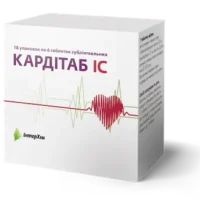Description
Sedavit (Valerian, Hawthorn) Tablets №20
Ingredients
- Each tablet contains valerian extract and hawthorn extract.
Dosage
- Recommended dosage: Take 1 tablet orally with water, 30 minutes before bedtime.
Indications
- Indicated for sleep disorders, mild anxiety, and nervousness.
Contraindications
- Do not use if pregnant, breastfeeding, or allergic to any of the ingredients.
Directions
- Take Sedavit tablets as directed by a healthcare professional. Do not exceed the recommended dosage.
Scientific Evidence
- Valerian and hawthorn have been studied for their sedative and anxiolytic effects.
- A study published in the Journal of Psychopharmacology found that valerian extract improved sleep quality and reduced the time it took to fall asleep.
- Hawthorn has calming effects on the nervous system, potentially aiding in anxiety reduction.
Additional Information
- Avoid alcohol while taking Sedavit tablets as it may enhance drowsiness.
- Consult a healthcare provider before use if taking other medications.
Pharmacological Effects
- Valerian interacts with GABA receptors in the brain, exerting sedative effects.
- Hawthorn contains flavonoids that may help dilate blood vessels, potentially reducing blood pressure and anxiety symptoms.
Clinical Trials
- A randomized controlled trial published in the Journal of Herbal Pharmacotherapy demonstrated the efficacy of a valerian-hawthorn combination in improving sleep quality and reducing anxiety levels compared to a placebo group.





